 |
Indian American sworn in to Massachussetts advisory board |
Ramesh Advani, selectman from Norfolk, Mass. was sworn in as the co-chair of the Asian American Commission by Massachusetts Governor Mitt Romney.
The commission, which was created in 1992 to advise the Governor on matters of interest to the Asian American community in the state, became dormant after members failed to meet twice annually. The commission has now been reconstituted with Advani and Daniel Wong, owner of Kowloon restaurant in Saugus, Massachussetts, as co-chairs.
The Governor, speaking on the occasion, lauded the Asian American community for excellence in math and sciences, and family values. “I value and appreciate those who come here from foreign lands and enhance the culture of our land,” Romney said, before swearing in the 12-member commission.
“I’m honoured to be a part of the commission,” Advani, the only South Asian on the commission, said. “This is my home and my kids were born here. I may not be able to do something on the national level, but it’s great to be able to move beyond the town to the state.”
The commission plans to meet in May to lay out its aims and priorities. One of the key points of discussion will be identifying areas of interest where the commission can make recommendations to the
governor.
|
|
|
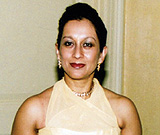
|
Indian selected to UK marketing body
|
Lopa Patel, founder of Asian lifestyle portal Redhotcurry.com, has become the first Indian woman to be elected fellow of Britain’s Chartered Institute of Marketing (CIM).
The world’s largest body of marketing with nearly 50,000 members across the globe, CIM has a total of 1,905 fellows of which women comprise a mere 10 per cent.
Obviously thrilled at the honour bestowed on her, as the fellowship is conferred upon only those with considerable expertise at a senior level, Patel said: “I hope to work with the institute in increasing the professional recognition of excellence in marketing.”
Added Patel: “A career in marketing can be hugely rewarding. For young Asians, the industry offers the double opportunity of career progression and entrepreneurship. The industry thrives on many self-employed, freelance workers and
consultants.
|
|
|
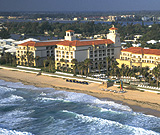
|
Conditions spelled out for home loans to NRIs
|
Though NRIs can also qualify for home loans in India, terms and conditions differ between their eligibility and that of resident Indians.
Stipulations include the NRI must be a graduate and earn a minimum wage of $2,000 a month. The size of the loan may not exceed 85 per cent of the cost of the property with a maximum limit, which differs from lender to lender.
Repayment schedules must be met through non-resident external or non-resident ordinary accounts. The rate of interest, though on a par with resident’s rates, specify that the tenure of the loan may be between 20 and 15 years, again depending on the lender.
Documentation required are passport copies, work contracts, title deeds, encumbrance certificates, and a number of other papers based on the status of the targeted property.
Lenders like HDFC, Bank of Baroda and ICICI Bank have tied up with various associations in the Gulf countries to coordinate the loan process for NRIs wishing to purchase property in India.
|
|
|
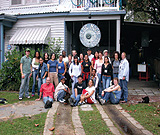
|
US welcomes more Indian students
|
Karen Hughes, US Under Secretary of State for Public Diplomacy and Public Affairs stated that America wants to open its doors even more, to welcome students from India and also wants more American students to travel to India.
India is already number one worldwide, in sending students to the US. Hughes expressed America’s desire to build on this strength for the benefit of future generations of both countries.
Exchange programmes such as the Fulbright Fellowships already exchange students. Massachusetts Institute of Technology also runs ongoing collaborative educational projects with Indian institutions.
After the 9/11 tragedy security concerns made student visas more difficult to obtain, but that is changing and was up by 32 per cent over the last year. Ms Hughes and her accompanying delegation’s visit to India is aimed at reiterating that Indian students are welcome in the US.
|
|
|
|
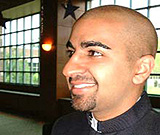 |
Indian is music director of Ridgefield youth orchestra |
If Ankush Kumar Bahl believed in omens, he would have reconsidered his career after his first concert as conductor in 2000.
The concert at the University of Berkeley was performed next to a dance studio, and the sound of clogs echoed off the walls. Sirens were going off intermittently nearby and the problems reached a crescendo when one of the bulbs broke on the stage.
“None of these things changed that we made really great music that night,” says Bahl, 28, now the music director of the Ridgefield Youth Symphony Orchestra and assistant music director for the Ridgefield Symphony Orchestra in Ridgefield, Conn.
In addition, Bahl is the music director of the New Jersey Youth Symphony, cover conductor for the New Jersey Symphony Orchestra, and staff conductor at his alma mater, the Manhattan School of Music. He also conducts at the International Goppisberg Music Festival in Grachen, Switzerland in summer.
As music director, Bahl auditions and selects the orchestra, selects the music to be played, interprets the music, and rehearses the music with the orchestra.
|
|
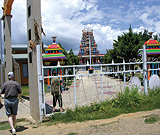 |
More Hindu temples in New Zealand |
The number of temples in New Zealand is set to increase with more Hindu immigrants seeking to express their cultural roots, a report said. According to Statistics New Zealand, which released its culture and identity report based on last year’s census data in April, there are 64,392 Hindus in 2006, up 61.8 percent since the last census was conducted.
Besides, there are 36,072 Muslims, up 52.6 percent, and 9,507 Sikhs, up 83 per cent. The report said that although the number of Hindus, Sikhs and Muslims remained small compared with the country’s main Christian denominations, they have increased dramatically in percentage terms.
The report also found that Asians remained the fastest growing ethnic group in New Zealand. The Asian population grew by almost half in the five years between censuses — to 354,552 people.
And their growth in numbers far outstripped the 7.8 per cent expansion of New Zealand’s total population, to 4.03 million..
|
|
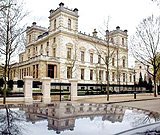 |
Rich Indians chase high-end properties in UK |
The number of prosperous Indians seeking to buy high-end property in London and elsewhere in Britain is growing exponentially, and most are willing to pay well over 1 million pounds for a place under the British sun.Thanks to a growing economy and globalisation of enterprise, more and more Indian companies are opening offices in London to leverage its geographical, historical and financial advantages.
This has resulted in swathes of prime property being bought by Indian entrepreneurs either for themselves or their companies. Indian businessmen now rival Chinese and Russian plutocrats in chasing prime property in London, according to leading estate agents.
Joining the chase is Shilpa Shetty, winner of reality show “Celebrity Big Brother”, who is reported to be buying a home in the trendy Hoxton area of north London.
The record for buying the most expensive property in London so far stands in the name of Lakshmi Mittal, who bought numbers 18-19, Kensington Palace Gardens, for £57.1 million in 2004.
The Indian buyers do not only come from India but also include the British Indians who have settled here for several years. And having done well, they are keen to move upwards on the property ladder.
Estate agents say that such is the interest from Indian buyers that many agents have now set up a separate desk to deal with Indian buyers. These include Savills, a top-end estate agency, Hamptons and Knight Frank.
London has a unique place in the Indian imagination. The capital is seen as a safe investment destination that includes all cultural and other accoutrements attractive to the globalised Indian entrepreneur. Owning property in London or having a London address is seen as a key statement for this growing class.
London is said to be particularly attractive to the global super-rich because of its accessibility, stability, low taxation and global standing of its financial institutions. It is seen as a magnet to the world’s billionaires.
According to Sheetell Halai, who runs Savills’ India desk: “The question (for Indians) used to be, ‘How big is your house?’ Now it’s, ‘How many do you have?’” She says the majority of her clients are looking for flats, with a budget of 1 million to 6 million pounds.
She told local media that Indians in search of houses were prepared to pay £7 million to £8 million. Savills is also planning to target expatriate Indians based in Hong Kong, Shanghai and the US, keen to invest in London. Such is the pace of acquisition by Indians that estate agents are already talking of a new ‘Asian arc’ stretching from Watford, Hertfordshire, through Beaconsfield and Gerrards Cross in Buckinghamshire to St. George’s Hill in Surrey. Jaideep Singh of Knight Frank said: “2007 is going to be very big for Indian buyers. The rich are getting richer and now middle-class Indians are coming here to set up offices and buy a place, but they are shocked that their £2 million will buy so little.”
London has been consistently ranked by independent studies as the best place to locate a business in Europe. A third of the Fortune Global 500 have their European headquarters in London. Foreign-owned companies account for one quarter of all businesses in London..
|
|